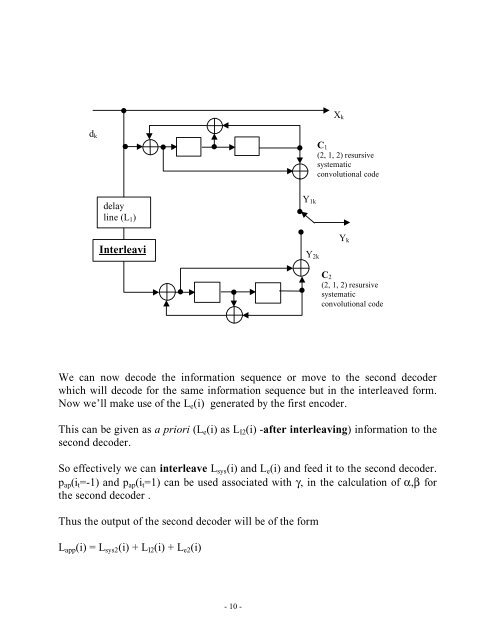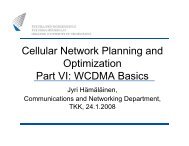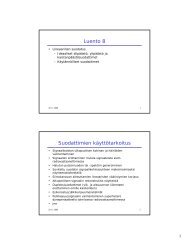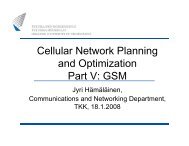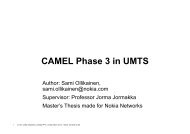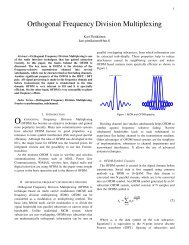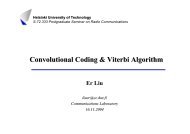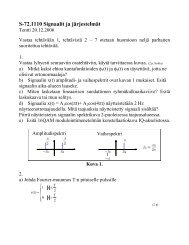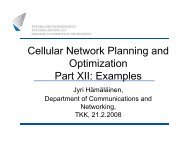Lecture notes on turbo codes.
Lecture notes on turbo codes.
Lecture notes on turbo codes.
Create successful ePaper yourself
Turn your PDF publications into a flip-book with our unique Google optimized e-Paper software.
d kdelayline (L 1 )InterleavingX kY kC 1(2, 1, 2) resursivesystematicc<strong>on</strong>voluti<strong>on</strong>al codeY 1kY 2kC 2(2, 1, 2) resursivesystematicc<strong>on</strong>voluti<strong>on</strong>al codeWe can now decode the informati<strong>on</strong> sequence or move to the sec<strong>on</strong>d decoderwhich will decode for the same informati<strong>on</strong> sequence but in the interleaved form.Now we’ll make use of the L e (i) generated by the first encoder.This can be given as a priori (L e (i) as L I2 (i) -after interleaving) informati<strong>on</strong> to thesec<strong>on</strong>d decoder.So effectively we can interleave L sys (i) and L e (i) and feed it to the sec<strong>on</strong>d decoder.p ap (i t =-1) and p ap (i t =1) can be used associated with γ, in the calculati<strong>on</strong> of α,β forthe sec<strong>on</strong>d decoder .Thus the output of the sec<strong>on</strong>d decoder will be of the formL app (i) = L sys2 (i) + L I2 (i) + L e2 (i)- 10 -


